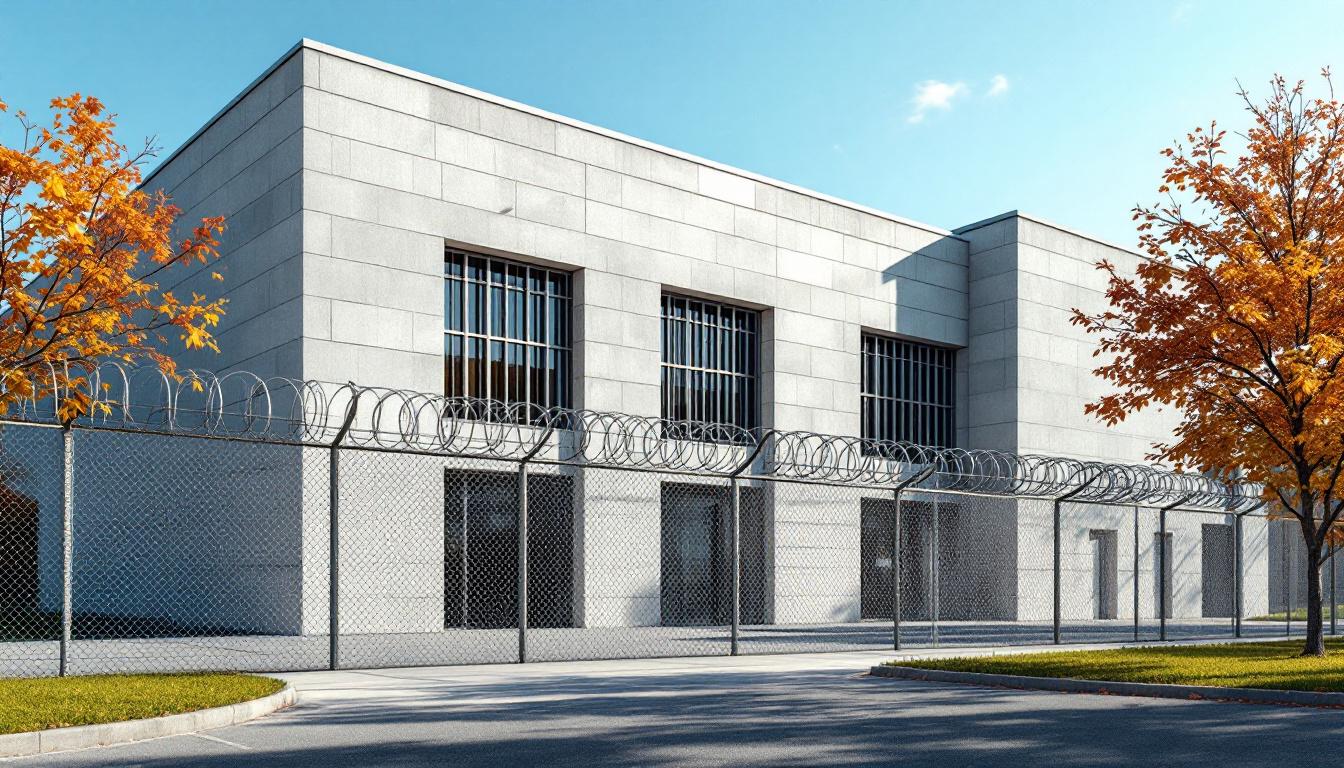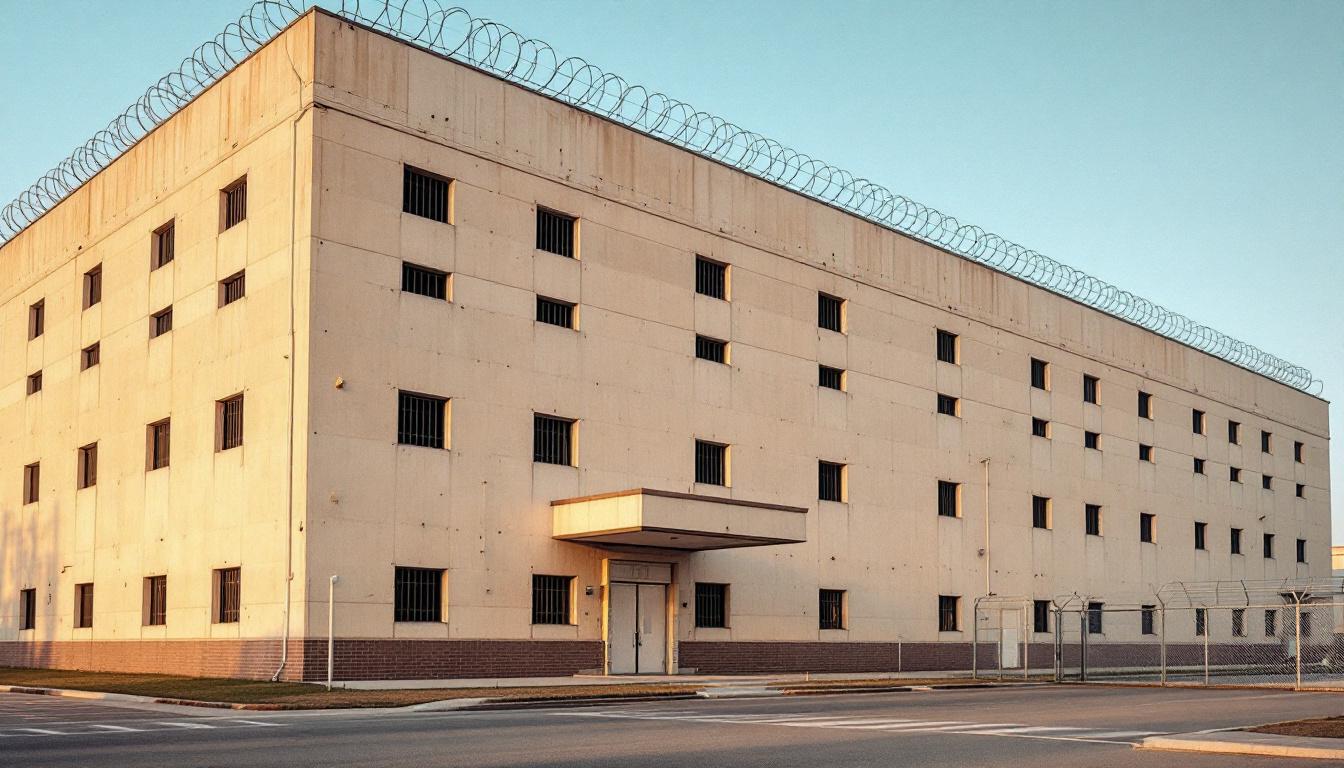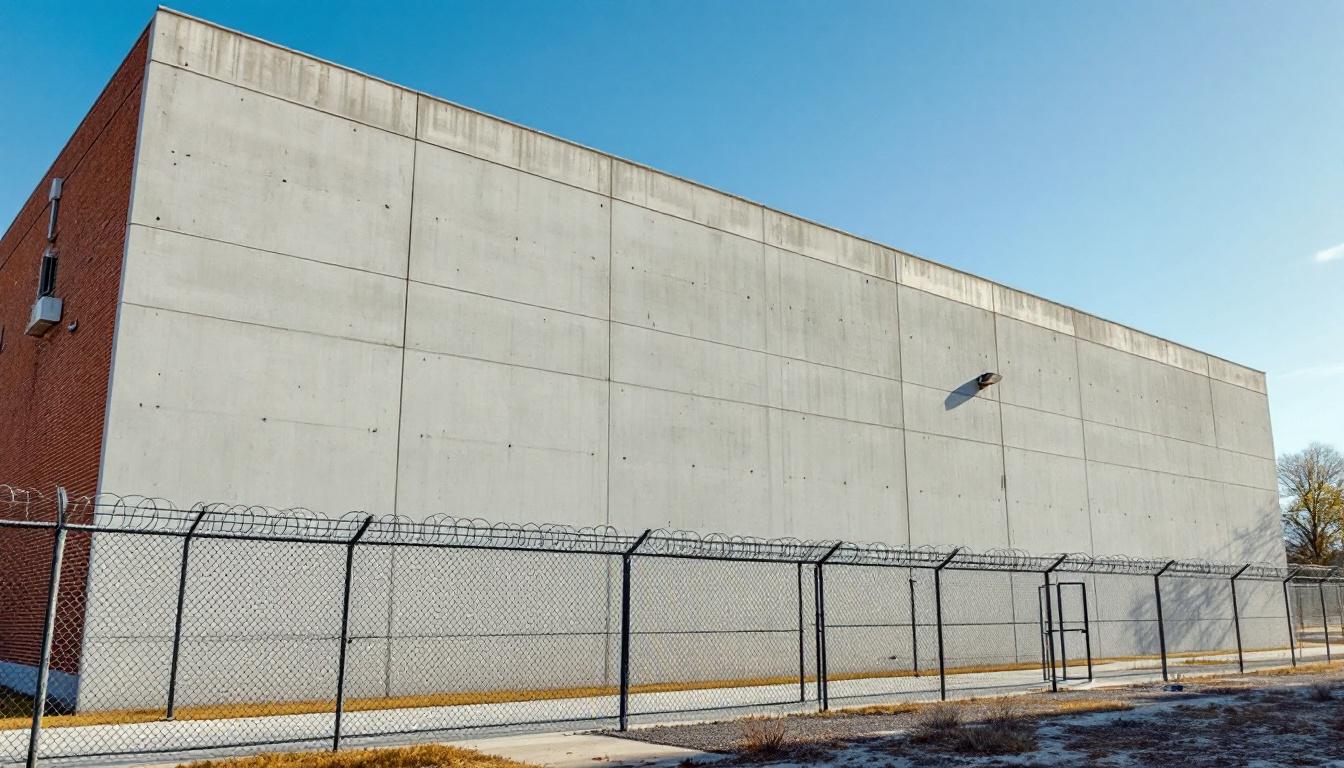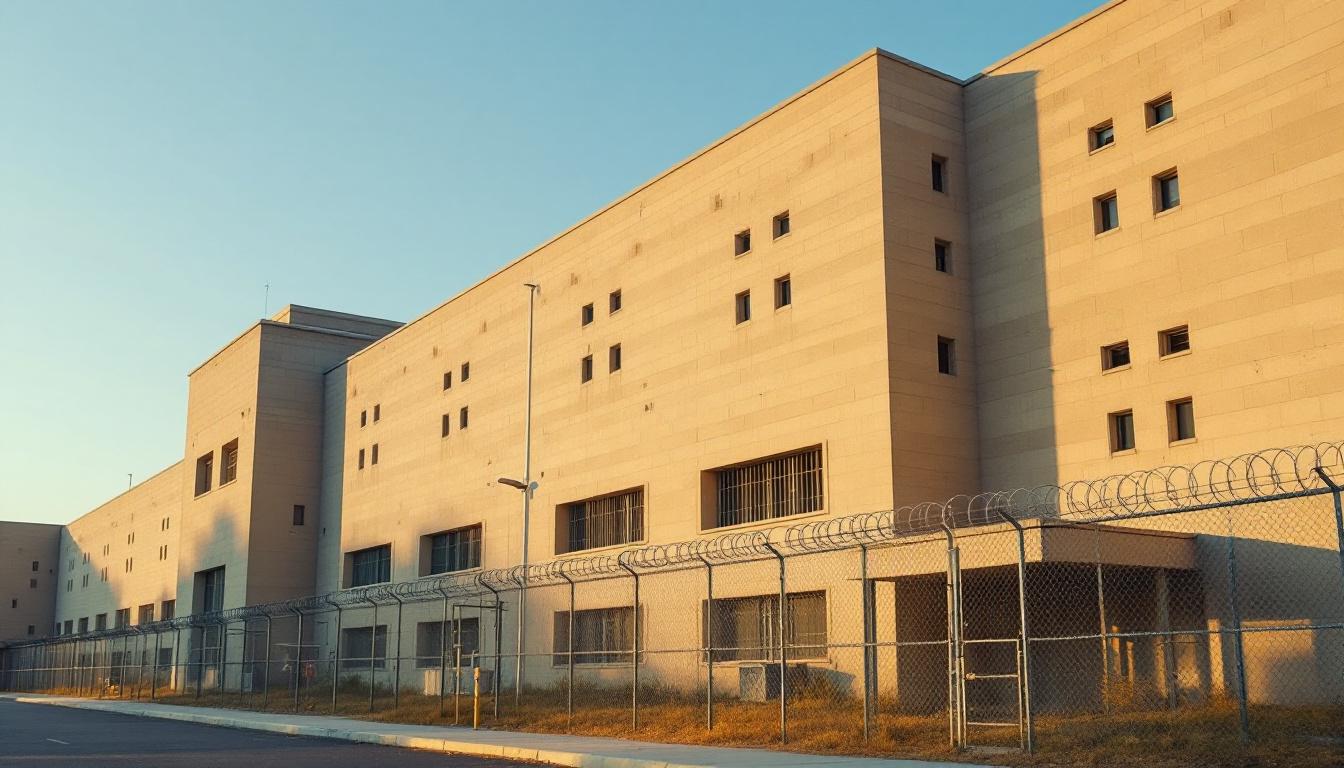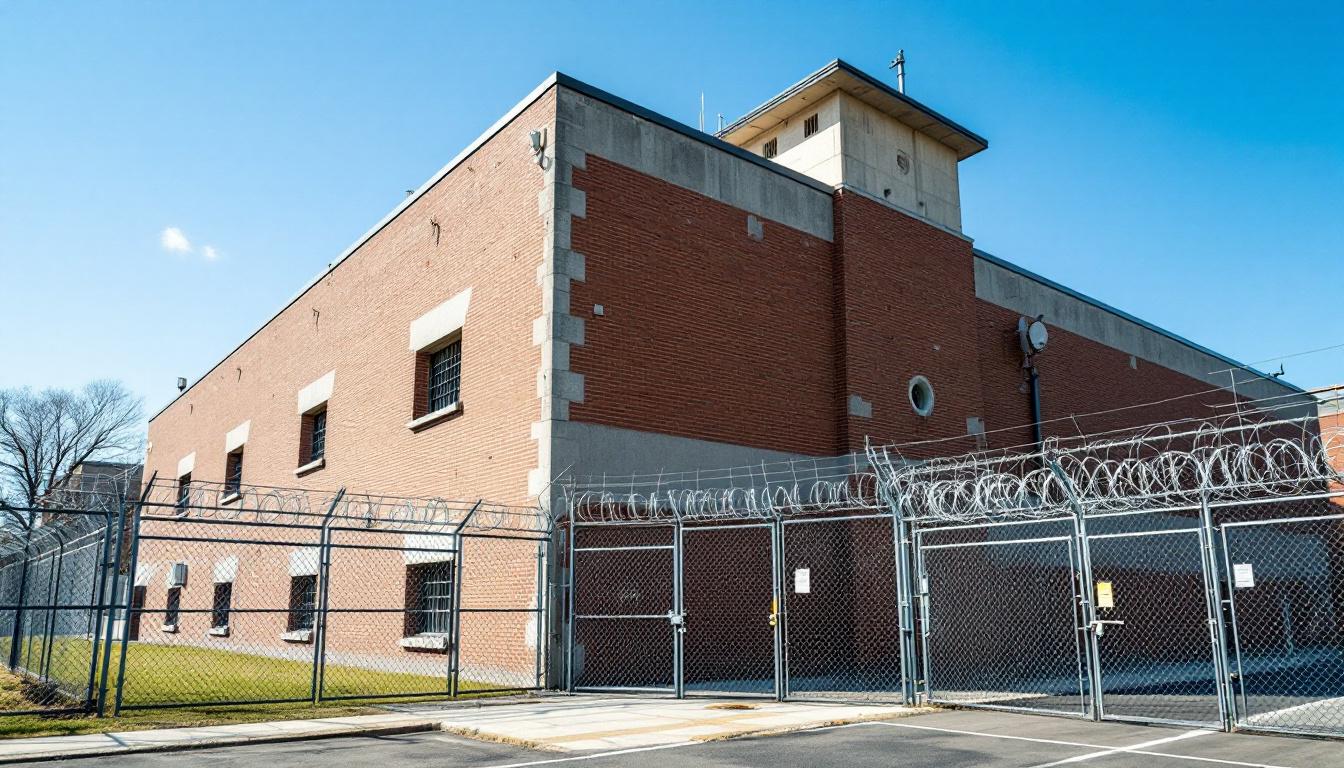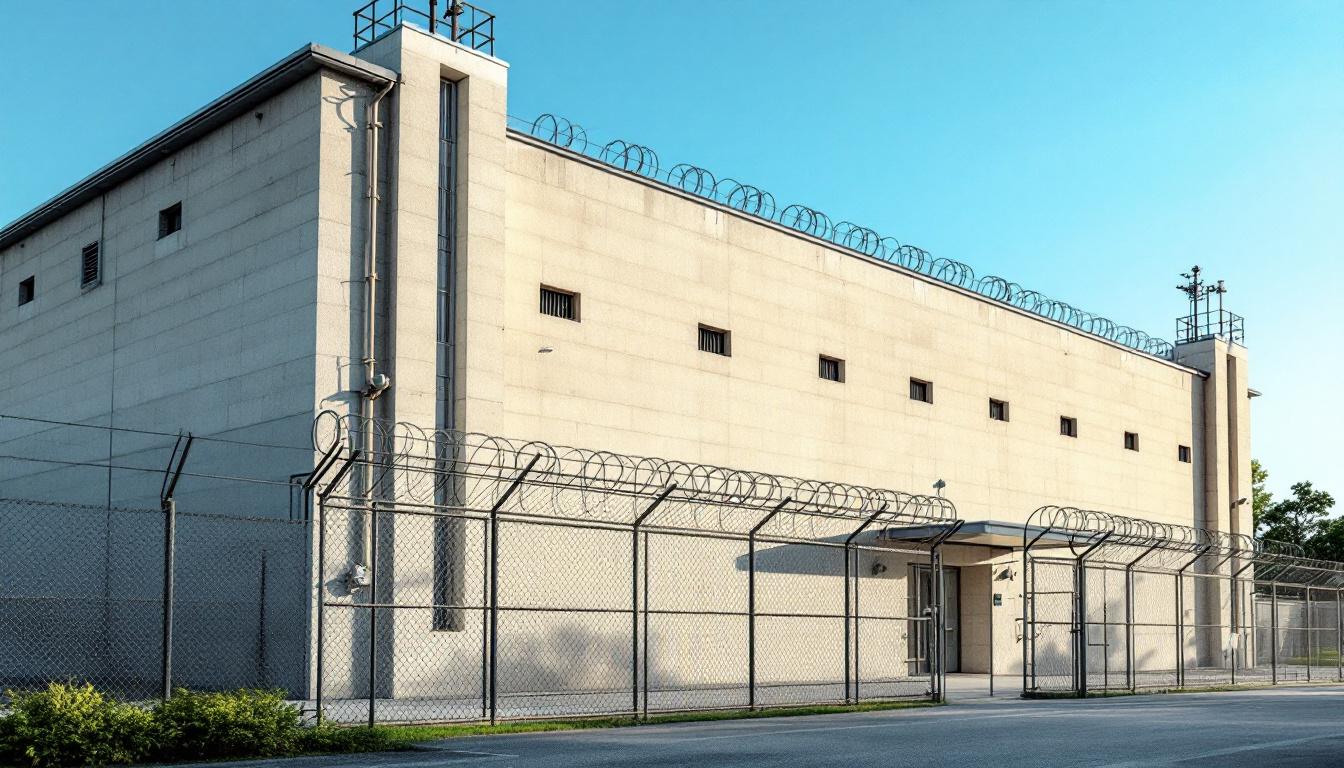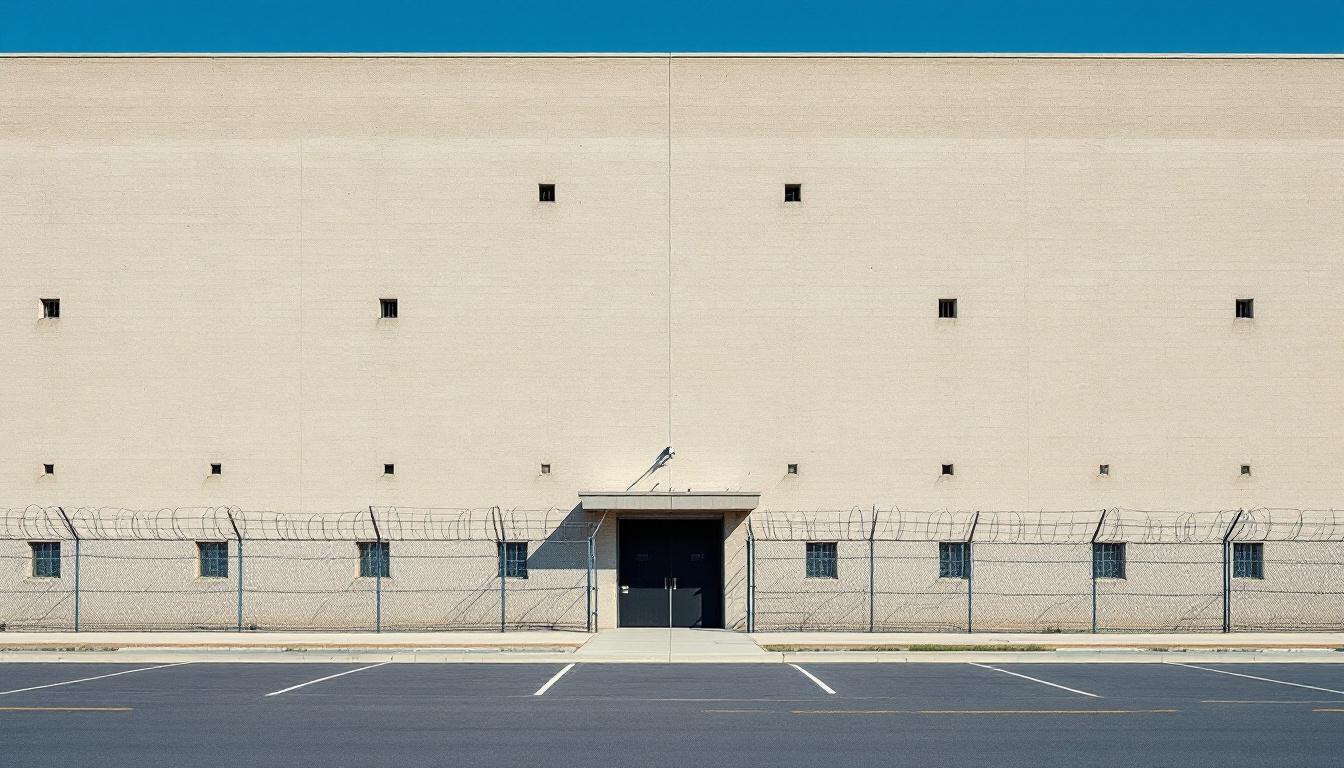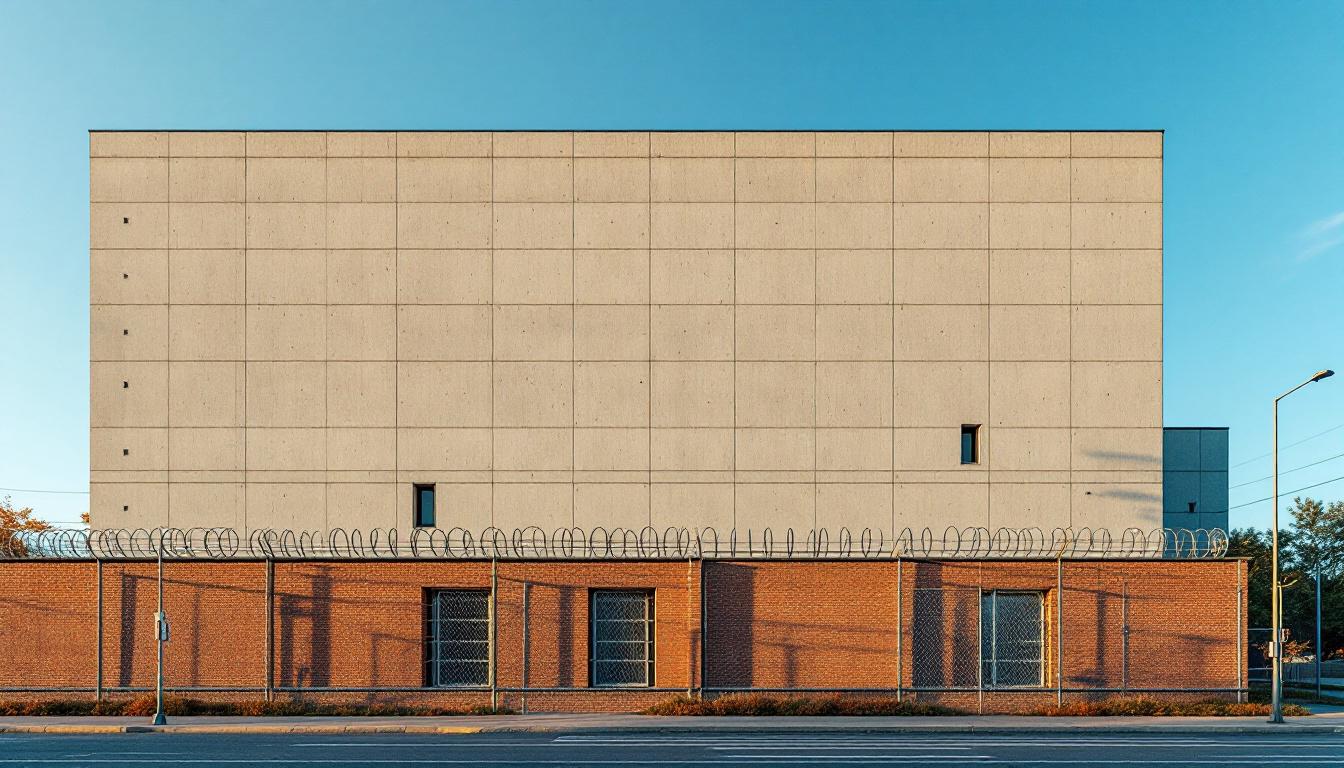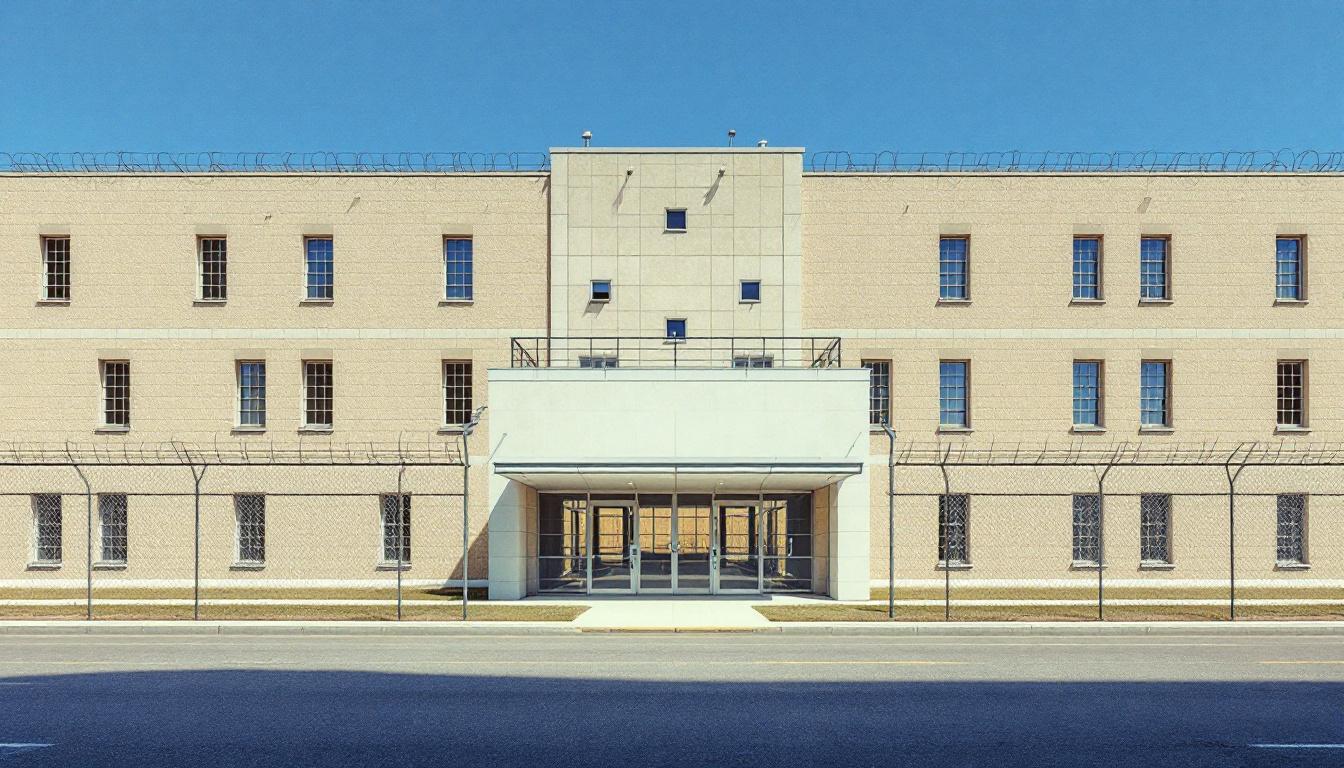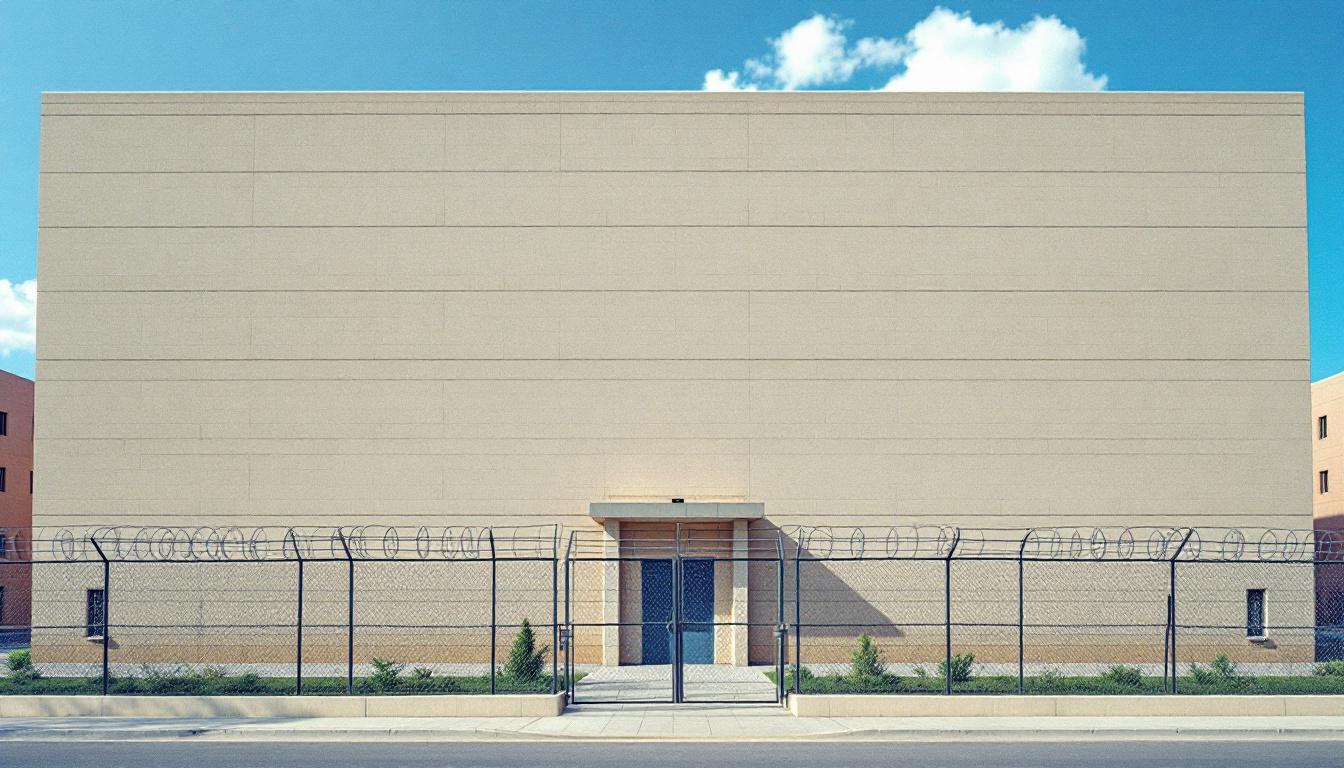
Quick Navigation
How to contact an inmate at Madison Correctional Institution
This comprehensive guide will walk you through how to connect with an inmate at Madison Correctional Institution. Follow the steps below to find an inmate and send letters and photos:
- Search for the inmate using our search tool below
- Create your account or log in to Penmate
- Write your message (up to 6,000 characters)
- Send instantly - inmates receive printed copies daily
Find an Inmate
Search for an inmate to start communicating today
Tip: You can search by first name, last name, or inmate ID number
To contact a person at Madison Correctional Institution start by searching for the person on the official facility website. Perform a search by following these steps:
- Step 1: Enter their first name and last name into the search form and click "Search"
- Step 2: Locate their inmate record
- Step 3: Write down their Inmate ID and any housing information provided
Important! Be sure to enter the person's full name. Nicknames should not be used.
How to Send Messages to Inmates

You can use your phone or computer to send emails, letters, and photos to an inmate. Messages are sent electronically to inmate tablets or kiosks at the facility. If you would like to send a message, start by searching for an inmate at Madison Correctional Institution.
Sending Photos and Postcards

A great way to send love and support to a loved one at Madison Correctional Institution is to send photos and postcards. It only takes a few minutes to send photos from your phone and it makes a huge difference. You can also mail postcards with words of support and inspiration, or design your own postcard for special moments like birthdays and holidays.
Important! Be sure not to send any explicit photos or they may not be approved by the facility. You can also use a photo printing app like Penmate to make sure your photos are printed at the correct size (4x6 or 3x5) and are mailed according to the rules and regulations of Madison Correctional Institution.
Frequently asked questions about Madison Correctional Institution
-
How long does it take to deliver a message?
If you're sending an email message your letter is usually delivered within 24-48 hours. For messages sent via mail you should expect delivery within 3-7 days. All messages will need be approved by Madison Correctional Institution.
-
How much does it cost to send a message to Madison Correctional Institution?
You can send a message free using your phone or mail a message via USPS for the price of a $0.60 stamp and envelope. You can also purchase credits or e-stamps from services starting at $1.99.
-
What services can I use to contact an inmate at Madison Correctional Institution?
Penmate
You can use Penmate to send letters and photos to an inmate from your phone. It's an easy way to stay in touch during your loved one's incarceration. Use the inmate locator to find an inmate's location and contact information, then you can send messages within a few minutes.
Securus messaging
Securus may be another option for communicating with an inmate at Madison Correctional Institution. You can create a friends and family account and purchase credits to send messages. All messages will be reviewed and must be approved by the facility.
JPay
Some county jails and state prisons may support sending messages with JPay. You must register an account with the system, find your loved one, and purchase stamps to send messages. For some locations you can also attach photos.
Smart Jail Mail
You may also check if Smart Jail Mail is available at Madison Correctional Institution. Smart Jail Mail is operated by Smart Communications and has contracted with some state and county jails. After purchasing credits, your messages and photos are sent to the facility, printed out, and then handed out to your loved one.
-
What is the mailing address of Madison Correctional Institution?
Mailing address:
Madison Correctional Institution
382 SW Mci Way
Madison, FL 32340
Phone: (850) 973-5300Business hours:
- Monday: Open 24 hours
- Tuesday: Open 24 hours
- Wednesday: Open 24 hours
- Thursday: Open 24 hours
- Friday: Open 24 hours
- Saturday: Open 24 hours
- Sunday: Open 24 hours
-
What are the visiting hours at Madison Correctional Institution?
Visiting hours at Madison Correctional Institution vary by housing unit and security level. Generally, visits are scheduled on weekends and holidays, with some facilities offering weekday visits. Contact the facility directly at (850) 973-5300 or check their website for the current visiting schedule. Visits typically last 30-60 minutes and must be scheduled in advance.
-
What items are prohibited when sending mail to Madison Correctional Institution?
Prohibited items typically include: cash, personal checks, stamps, stickers, glitter, glue, tape, staples, paperclips, polaroid photos, musical or blank greeting cards, hardcover books, magazines with staples, and any items containing metal or electronics. Only send letters on plain white paper with blue or black ink. Photos must be printed on regular photo paper (no Polaroids). Always check with Madison Correctional Institution for their specific mail policies.
-
How do I send money to an inmate at Madison Correctional Institution?
You can send money to an inmate at Madison Correctional Institution through several methods: 1) Online using JPay, Access Corrections, or the facility's approved vendor, 2) Money orders mailed directly to the facility with the inmate's name and ID number, 3) Kiosks located in the facility lobby, or 4) Over the phone using a credit or debit card. Fees vary by method, typically ranging from $2.95 to $11.95 per transaction.
-
Can I schedule a video visit with an inmate at Madison Correctional Institution?
Many facilities now offer video visitation as an alternative to in-person visits. At Madison Correctional Institution, video visits may be available through services like Penmate, Securus Video Connect, GTL, or ICSolutions. Video visits typically cost $10-20 for 20-30 minutes and must be scheduled in advance. You'll need a computer or smartphone with a camera and reliable internet connection. Contact the facility for their specific video visitation policies and approved vendors.
-
What identification do I need to visit an inmate at Madison Correctional Institution?
All visitors must present valid government-issued photo identification such as a driver's license, state ID, passport, or military ID. Minors must be accompanied by a parent or legal guardian who can provide the minor's birth certificate. Some facilities require visitors to be on the inmate's approved visitation list, which may require a background check. Contact Madison Correctional Institution for specific ID requirements and visitor approval procedures.
-
How can I find out an inmate's release date?
To find an inmate's release date at Madison Correctional Institution, you can: 1) Use the online inmate search tool if available, 2) Call the facility's records department, 3) Contact the inmate's case manager or counselor, or 4) Have the inmate provide this information during a call or visit. For privacy reasons, some facilities only release this information to immediate family members.
Facility Overview
Contact Information
Madison Correctional Institution382 SW Mci Way
Madison, FL 32340
Phone: (850) 973-5300
Official Website

About Madison Correctional Institution
Within Tampa's urban landscape, Madison Correctional Inst., FL operates as a significant component of the state's correctional infrastructure, serving residents while maintaining connections to the broader community resources that define this Gulf Coast region. The facility's positioning in Tampa allows for meaningful collaboration with local organizations and service providers, creating pathways for residents to access educational opportunities and skill-building programs that may support their eventual reintegration into Florida communities.
This FL correctional facility typically emphasizes outcomes-oriented programming, with residents services often including vocational training opportunities that align with Tampa's diverse economic sectors. Educational initiatives may encompass basic literacy support through advanced certification programs, while counseling and behavioral health services generally work to address underlying factors that contribute to criminal behavior. The facility's approach to rehabilitation often incorporates partnerships with community-based organizations, faith groups, and educational institutions throughout the Tampa Bay area, recognizing that successful reentry depends on strong connections between incarcerated individuals and the communities they will rejoin.
Through its community-centered approach, the correctional facility works to prepare residents for productive participation in society while maintaining public safety priorities. Programs may include job readiness training, substance abuse treatment, and family reunification support, all designed with measurable outcomes in mind. The facility's location within Tampa's metropolitan area typically provides access to a network of reentry resources, from employment assistance to housing support, that can prove essential for individuals transitioning back into community life throughout Florida.
Programs & Services
Educational initiatives form the cornerstone of rehabilitation efforts, with residents accessing foundational literacy courses, high school equivalency preparation, and vocational training opportunities. These structured learning environments typically emphasize practical skill development alongside academic achievement. Residents may participate in computer literacy courses and career readiness workshops that prepare them for successful community reintegration.
Vocational training initiatives often include specialized programs in barbering and cosmetology, providing residents with marketable skills and professional certification pathways. These hands-on programs typically combine classroom instruction with practical application, allowing participants to develop technical expertise while building confidence. In addition to these trade-focused offerings, creative writing workshops may provide therapeutic outlets for self-expression and communication skill development, helping residents process experiences and develop new perspectives.
Support services initiatives encompass both therapeutic interventions and transitional assistance programs. Substance abuse treatment typically delivers evidence-based counseling approaches through individual and group sessions, addressing underlying factors that may contribute to criminal behavior. Work release initiatives often provide eligible residents with supervised employment opportunities in the community, allowing them to maintain family connections, develop work histories, and save resources for their eventual release. These comprehensive support systems may work together to address the complex needs residents face during incarceration and preparation for community reentry.
Daily Life & Visitation

Structured schedules now govern every aspect of life, with residents following carefully planned routines that begin before dawn and continue throughout the day. These predictable patterns regularly include designated times for meals, work assignments, educational programming, and recreation, creating a framework that many residents find helps them maintain focus and personal discipline.
Housing arrangements typically place residents in dormitory-style units or cells, depending on their classification level and behavioral record. Living spaces generally accommodate multiple residents and include basic furnishings such as beds, storage areas, and shared bathroom facilities. Personal property allowances usually permit residents to keep limited personal items, hygiene products, and materials purchased through the commissary system. In addition to this structured living environment, residents typically have access to common areas where they can interact with others during designated social periods.
Work assignments deliver structure through various facility operations, including kitchen duties, maintenance tasks, laundry services, and grounds keeping responsibilities. Educational and vocational programs often supplement these work opportunities, providing residents with skills training and academic advancement options. Recreation periods may include access to outdoor exercise areas, indoor recreational facilities, and organized sports activities. Despite this structured environment, residents generally maintain connections with family members through scheduled visitation periods, monitored phone calls, and correspondence, which typically serve as important sources of support and motivation throughout their time at the facility.
Ready to Connect?
Start communicating with your loved one today
Search for an Inmate
